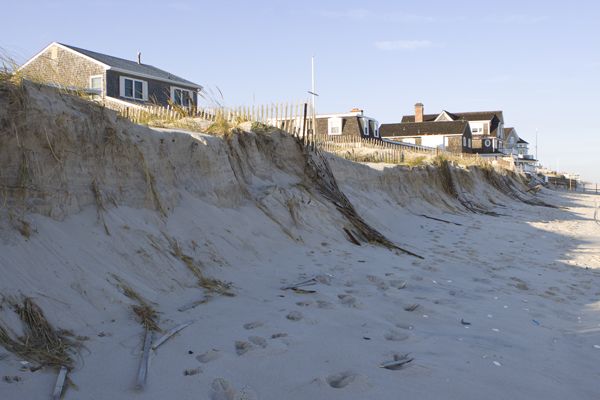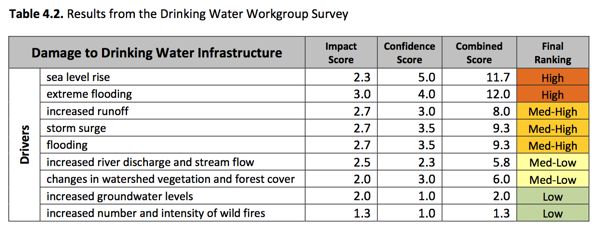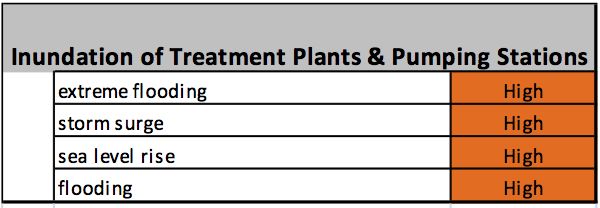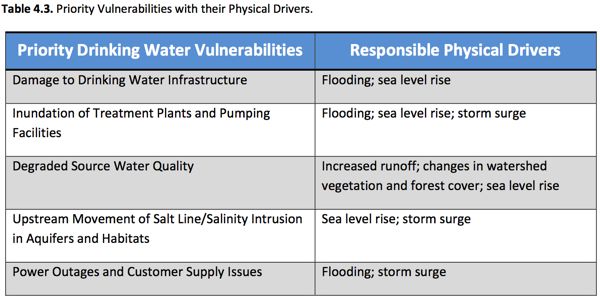“Frankenstorm” Another Example of Global Warming Extreme Weather
NJ’s Longstanding High Vulnerability to Major Storms Ignored
Climate Change Adaptation Planing Neglected – Shore Poorly Prepared
“In New Jersey the coast is so heavily urbanized and developed you can’t expect people to simply agree to retreat – there’s too much invested in the shore,” said Martin Bierbaum, director of the Municipal Land Use Center at the College of New Jersey. ~~~ Coastal conundrum: New Jersey bill may protect economy but not environment
[Updates below]
Well Marty, people don’t necessarily need to agree to “retreat”.
Reality has a way of intruding – a major storm just might make relocation decisions for them.
Don’t say you weren’t warned.
We – and many others, e.g. see
- IPCC Report Managing the Risks of Extreme Events and Disasters to Advance Climate Change Adaptation;
- Union of Concerned Scientists Report: Confronting Climate Change in the US Northeast: Science, Impacts, and Solutions;
- The University of New Hampshire Report:Trends in Extreme Precipitation Events for the Northeastern United States 1948-2007;
- Princeton University: FUTURE SEA LEVEL RISE AND THE NEW JERSEY COAST
- (and let’s not forget MIT)
have been writing about this for years now.
Here is Jim Hansen’s take:
The standard scientist answer is “you cannot blame a specific weather/climate event on global warming.” That answer, to the public, translates as “no”. However, if the question were posed as “would these events have occurred if atmospheric carbon dioxide had remained at its pre-industrial level of 280 [parts per million] ppm?”, an appropriate answer in that case is “almost certainly not.” That answer, to the public, translates as “yes”, i.e., humans probably bear a responsibility for the extreme event.
In either case, the scientist usually goes on to say something about probabilities and how those are changing because of global warming. But the extended discussion, to much of the public, is chatter. The initial answer is all important. Although either answer can be defended as “correct”, we suggest that leading with the standard caveat “you cannot blame” is misleading and allows a misinterpretation about the danger of increasing extreme events.
We are warning the public and trying to get word out and some policy response to stuff like this: (DEP findings from the Section 309 Coastal Hazards Assessment)
Many parts of New Jersey’s densely populated coastal area are highly susceptible to the effects of the following coastal hazards: flooding, storm surge, episodic erosion, chronic erosion, sea level rise, and extra-tropical storms. Reconstruction of residential development and the conversion of single family dwellings into multi-unit dwellings continues in hazardous areas… the value of property at risk is increasing significantly. With anticipated accelerating sea level rise and increasing storm frequency and intensity, vulnerability to the risks of coastal hazards will not abate; it will only become more costly. […]
…in certain instances, structural engineering solutions will not be practical or economically feasible. In these cases future public and private development and redevelopment must be directed away from the hazardous areas. While some derogatorily refer to this option as “retreat,” from the perspective of sound planning based on the best available science, the concept actually involves “strategic adjustment.” Prudent planning requires that we expand upon the existing studies of the societal, economic, and environmental costs of possible mitigative actions while the greatest number of alternatives exist.
So, as the storm bears down on the Mid-Atlantic shore and the news media enters the typical mindless feeding frenzy, we will try to get ahead of the news cycle to remind people of essential facts that again will be ignored by the media and public policymakers:
1) This storm is made more severe by global warming;
2) Storm frequencies, intensities, and damage will only increase over time;
3) We need to begin a radical emergency program to phase out fossil fuels and build a renewable energy infrastructure;
4) We need to adapt to severe climate/weather changes that are inevitable given past emissions and increasing atmospheric CO2 levels;
5) We are doing virtually nothing to address any of these major problems – examples:
- Christie Administration Outsources Climate Change Adaptation Planning
- Monmouth Water Emergency Illustrates Climate Change Risks and Reveals Deficits in NJ’s Adaptation Planning
- Adapt or Die
- CHRISTIE SHREDS NEW JERSEY CLIMATE CHANGE PROGRAMS
- Another Emergency Declaration Along the Shore
- WHEN IT RAINS…IT FLOODS
- JERSEY SHORE HIGHLY VULNERABLE TO STORMS AND SEA LEVEL RISE
- NEW JERSEY SHORE DEGRADED BY SPRAWL DEVELOPMENT
[Update #1 – we’ve previously severely criticized DEP for failure to plan and prepare for coastal storms and for delegating responsibility to local government, so not surprisingly DEP is getting “out in front” of the storm.
But they are focusing on and doing the wrong thing!
DEP says nothing about global warming, climate change adaptation, or limiting development in hazardous locations!
DEP is focused exclusively on rolling back DEP regulations! Here’s Commissioner Martin’s letter to Mayor’s:
Moving forward, DEP will soon be proposing regulatory changes to make it even easier for you to maintain streams and ease any flooding in your towns, including broader Permits By Rule, automatic authorizations if the Governor or FEMA declares a State of Emergency, new General Permits and simpler Individual Permits.
Update #2 – I thought folks might be interested in a good question from an excellent reporter, with my response:
Hi Bill,
Thanks so much for sending your post. I’m intrigued in particular by one thing, which I may write about next week:
1) This storm is made more severe by global warming;
Is that actually provable, or is it more a matter of extrapolation and conjecture, however logical? What’s the scientific basis? Do you have reports/data/etc? Any scientists willing to discuss and confirm?
Thanks,
My reply:
The general theory is that global warming increases air, land and water surface temperatures, which increase atmospheric moisture content.
Warmer, wetter air results in more precipitation.Warmer air and warmer ocean temperatures increase the energy of storms.
Storms therefore become more severe and frequent.
The “provability” is complex (technically, there are both plausible causal mechanisms (see above) and suggestive but not yet statistically reliable data), but that complexity is discussed by Jim Hansen:
Here is Jim Hansen’s take:
The standard scientist answer is “you cannot blame a specific weather/climate event on global warming.” That answer, to the public, translates as “no”. However, if the question were posed as “would these events have occurred if atmospheric carbon dioxide had remained at its pre-industrial level of 280 [parts per million] ppm?”, an appropriate answer in that case is “almost certainly not.” That answer, to the public, translates as “yes”, i.e., humans probably bear a responsibility for the extreme event.
In either case, the scientist usually goes on to say something about probabilities and how those are changing because of global warming. But the extended discussion, to much of the public, is chatter. The initial answer is all important. Although either answer can be defended as “correct”, we suggest that leading with the standard caveat “you cannot blame” is misleading and allows a misinterpretation about the danger of increasing extreme events.
It is NOT conjecture or speculation, but it is science, statistics, and modeling.
In my post, (see: http://www.wolfenotes.com/2012/10/frankenstorm-another-example-of-global-warming-extreme-weather/
I linked to the following IPCC Report, but there are others:
IPCC Report Managing the Risks of Extreme Events and Disasters to Advance Climate Change Adaptation;
I am not familiar with scientists willing to go on the record on this.
Wolfe







